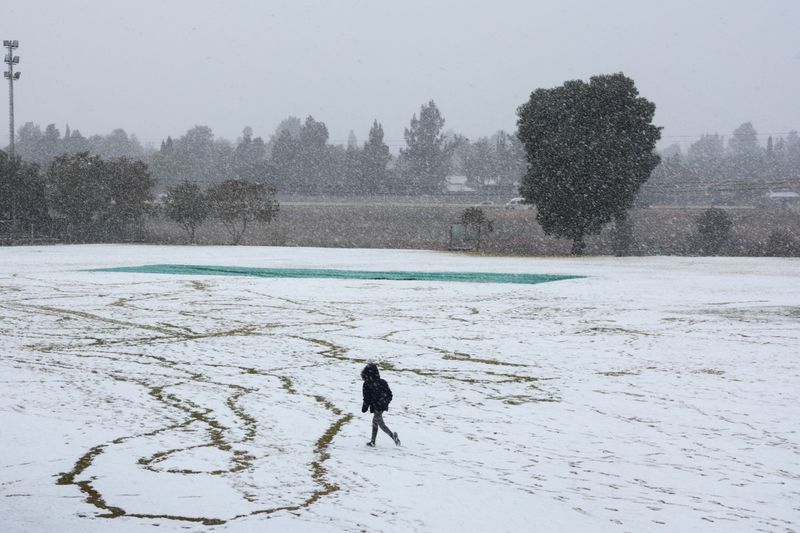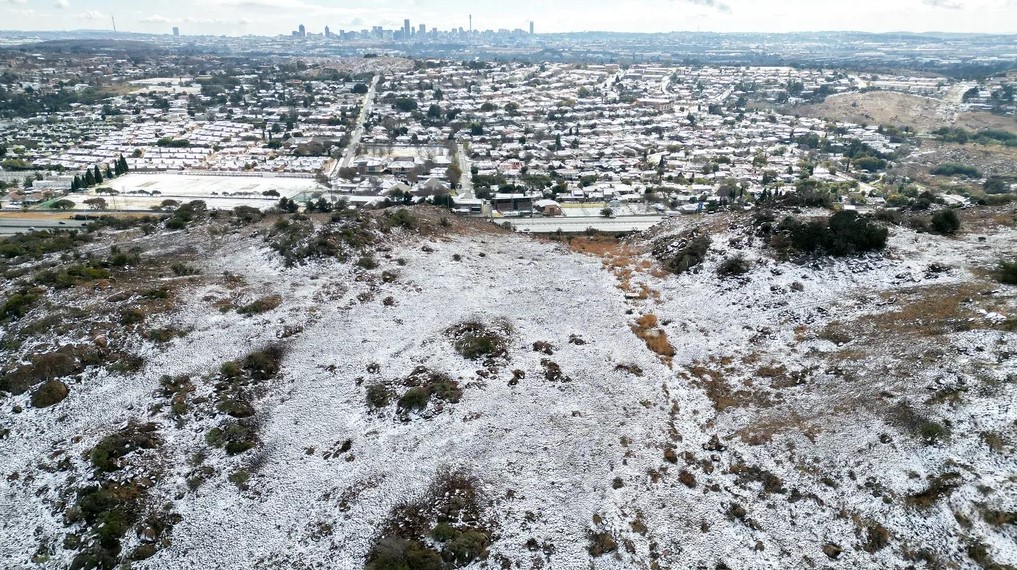The recent snowfall in Johannesburg, a rare event reminiscent of the 2012 occurrence, has stirred both curiosity and concern among locals, prompting an analysis of its weather drivers.
Meteorologist Lehlohonolo Thobela from the South African Weather Services explained that this snowfall resulted from a potent cold front and an upper air trough that intensified
cold conditions across Gauteng, Mpumalanga, KwaZulu-Natal, and the Drakensberg mountains.
Thobela connected this unusual weather to broader climate trends, noting the potential influence of an El Niño event and recent La Niña conditions.
Despite forecasts predicting lower precipitation, Thobela clarified that extreme cold events like Johannesburg’s snowfall are not directly tied to the anticipated El Niño phase.

Johannesburg, typically known for its warm climate, recently experienced a rare snow cover, a stark contrast to its usual weather.
The last significant snowfall in the city occurred in August 2012, affecting areas such as Soweto, central Johannesburg, Randburg, Heidelberg, Takane, and Fos Loras. This latest snowfall has raised questions about the underlying causes.
In an interview with CNBC Africa, Thobela discussed how the snowfall was caused by a strong cold front and upper air trough over Gauteng, with similar conditions affecting other regions.
He also linked the event to the broader impacts of climate change, including the potential El Niño forecast for the coming summer.
While El Niño typically brings drier conditions, Thobela emphasized that it is not directly responsible for the extreme cold experienced in Johannesburg. Instead, the snowfall can be attributed to the current weather systems and previous La Niña conditions.
Thobela expressed cautious optimism about future weather patterns, noting that while El Niño may bring changes, it does not necessarily predict similar extreme cold events.
The rare snowfall serves as a reminder of the unpredictable nature of climate change and underscores the need for proactive environmental measures.

